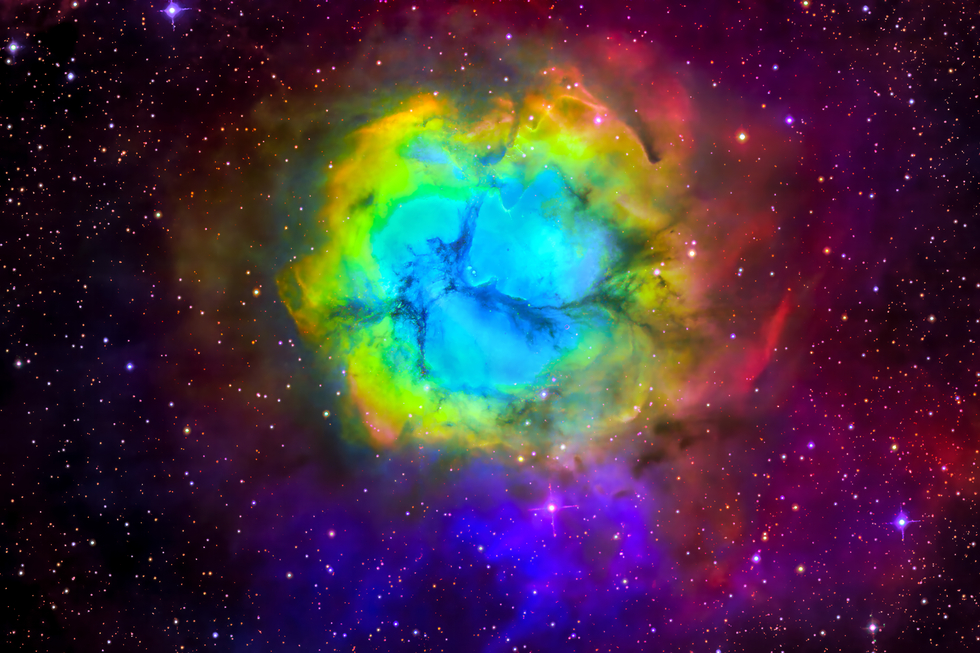NGC 6514 / M20 - Trifid Nebula, 2nd take, different palette
NGC 6514 / M20 - Trifid Nebula, 2nd take, different palette
This is my second take on the M20, with different colors than before, and smoother (less details) in the core. I've still boosted lots of the outside shadowy details, which most of the time are not represented well in photos of Trifid Nebula (as people often focus just on the main center part).
This time around most of the post processing was done in Photoshop and not StarTools, straight from the PixInsight output. Topaz Photo AI still helped with details and resolution.
As I said in my previous post, I like some green and I think this version of M20, false color or not, shows that green has a good place in astrophotography, even if not really emitted as wavelength too much by nebulas in real life.
The Trifid Nebula (catalogued as Messier 20 or M20 and as NGC 6514) is an H II region in the north-west of Sagittarius in a star-forming region in the Milky Way's Scutum-Centaurus Arm. It was discovered by Charles Messier on June 5, 1764. Its name means 'three-lobe'. The object is an unusual combination of an open cluster of stars, an emission nebula (the relatively dense, reddish-pink portion), a reflection nebula (the mainly NNE blue portion), and a dark nebula (the apparent 'gaps' in the former that cause the trifurcated appearance, also designated Barnard 85) [Wiki]
This time around most of the post processing was done in Photoshop and not StarTools, straight from the PixInsight output. Topaz Photo AI still helped with details and resolution.
As I said in my previous post, I like some green and I think this version of M20, false color or not, shows that green has a good place in astrophotography, even if not really emitted as wavelength too much by nebulas in real life.
The Trifid Nebula (catalogued as Messier 20 or M20 and as NGC 6514) is an H II region in the north-west of Sagittarius in a star-forming region in the Milky Way's Scutum-Centaurus Arm. It was discovered by Charles Messier on June 5, 1764. Its name means 'three-lobe'. The object is an unusual combination of an open cluster of stars, an emission nebula (the relatively dense, reddish-pink portion), a reflection nebula (the mainly NNE blue portion), and a dark nebula (the apparent 'gaps' in the former that cause the trifurcated appearance, also designated Barnard 85) [Wiki]
SPECIFICATIONS
Telescope
CHI-1-CMOS / Planewave CDK24
Camera
Camera CHI-1-CMOS / QHY 600M @ BIN2
Location
El Sauce Observatory, Chile
Date of observation
16/06/2023
Filters
HSO
Processing
PixInsight, Adobe Photoshop, Topaz Photo AI
Credits
Lachezar Vladikov / Telescope Live



